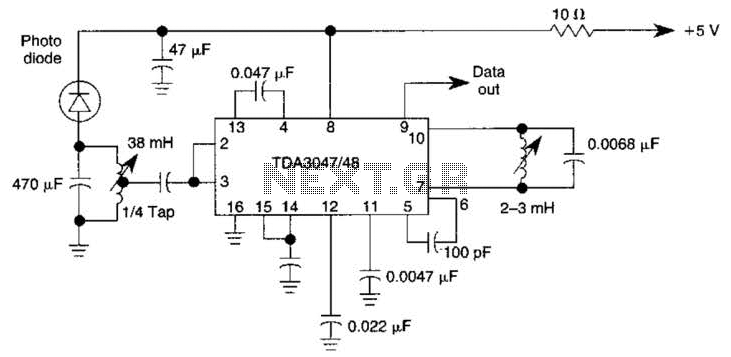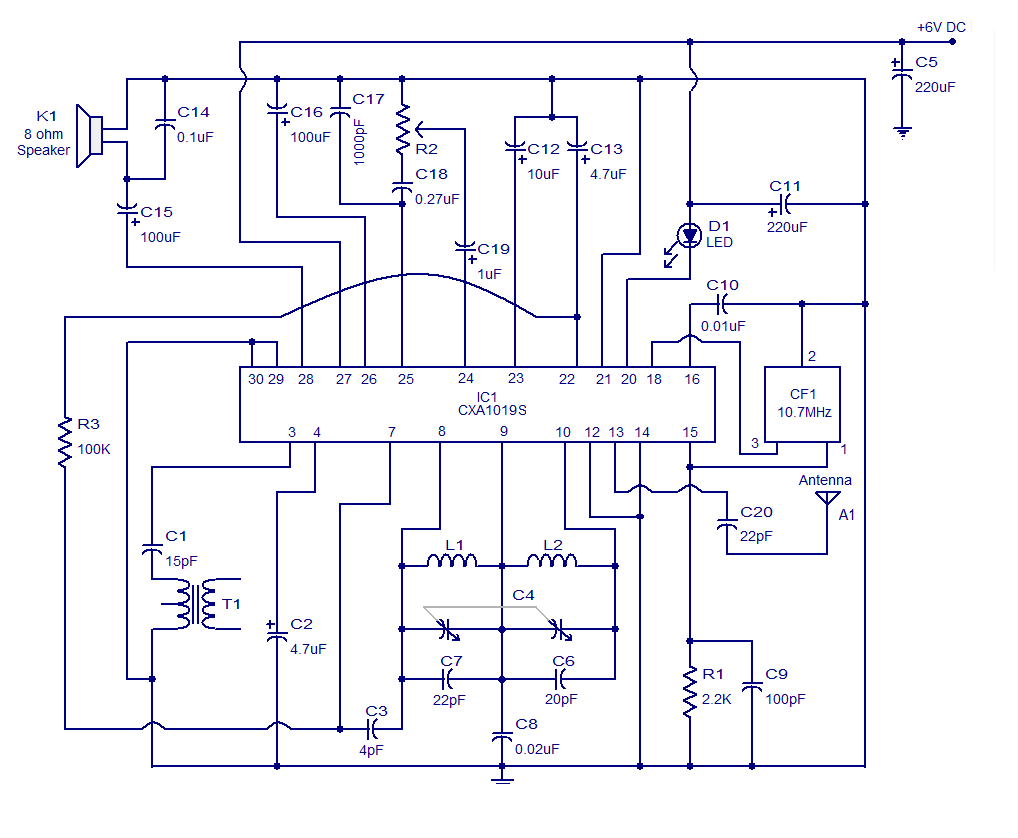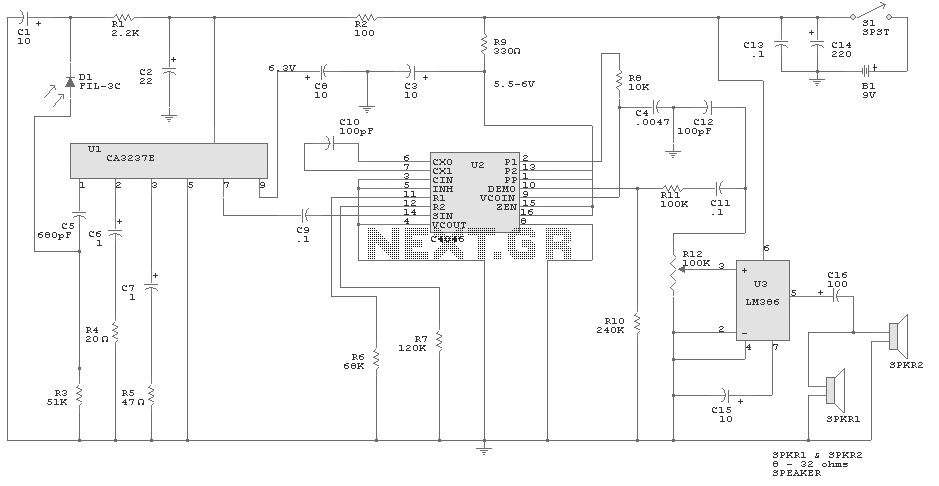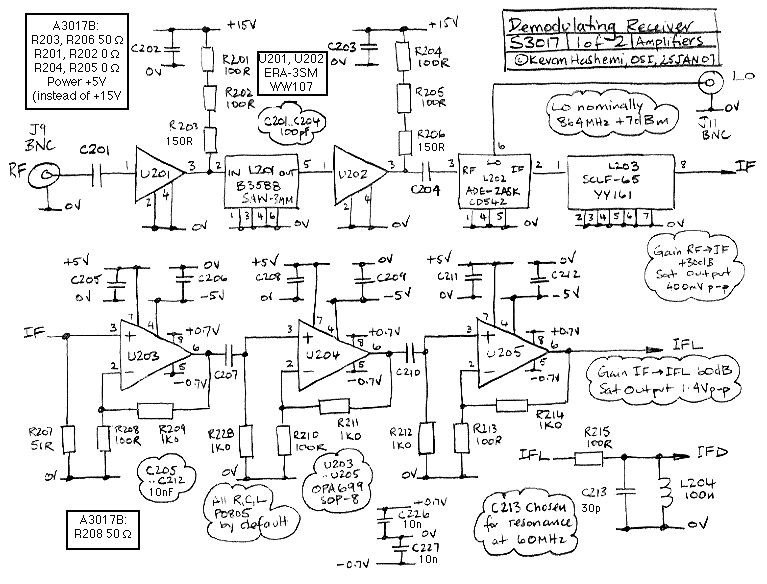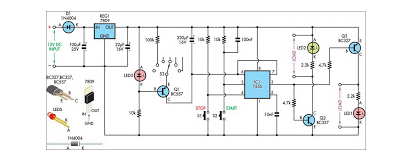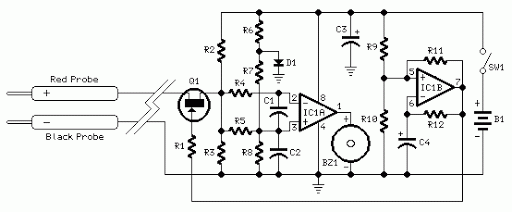
DTMF Receiver IC MT8870 Tester
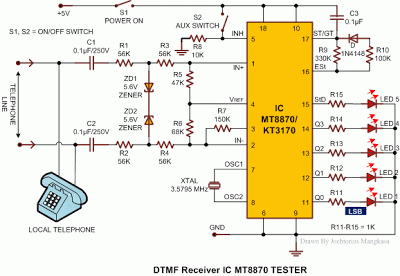
Most telephone equipment today utilizes a DTMF receiver integrated circuit (IC). A widely used DTMF receiver IC is the Motorola MT8870, which consists of 18 pins and is employed in telephones and various other applications. When projects utilizing this IC do not yield the expected output, engineers or technicians must test the IC separately. A quick test of this IC can save considerable time in research laboratories and the manufacturing industries of communication devices. A compact and convenient tester circuit for the DTMF IC can be assembled on a multipurpose PCB with an 18-pin IC base, or it can also be tested on a simple breadboard. For optimal performance in telephone equipment, the DTMF receiver must be designed to recognize valid tone pairs that are greater than 40 milliseconds in duration and accept successive digit tone pairs that are more than 40 milliseconds apart. However, for different applications such as remote controls and radio communications, tone duration may vary due to noise considerations. By adding an additional resistor and steering diode, the tone duration can be adjusted to different values. The circuit is configured in a balanced-line mode, utilizing a balanced differential amplifier input to reject common-mode noise signals. It also provides an effective bridging interface across a properly terminated telephone line. Transient protection can be achieved by splitting the input resistors and inserting zener diodes (ZD1 and ZD2) for voltage clamping. This configuration dissipates transient energy in the resistors and diodes, limiting the maximum voltage at the inputs. When any key on the local telephone keypad is pressed, the delayed steering (Std) output of the IC goes high upon receiving the tone pair, causing LED5 (connected to pin 15 of the IC via resistor R15) to illuminate. The duration of this high signal depends on the capacitor and resistor values at pins 16 and 17. An optional circuit for guard time adjustment is indicated by a dotted line. LEDs connected via resistors R11 to R14 at pins 11 through 14 indicate the output of the IC. The DTMF tone pair generated by pressing the telephone button is converted to binary values internally by the IC, which are then indicated by the corresponding LEDs glowing at the output pins. LED1 represents the least significant bit (LSB), while LED4 represents the most significant bit (MSB). For example, when dialing the number 5, LEDs 1 and 3 will illuminate, representing the binary value 0101. The same pattern applies to other numbers dialed. A functioning IC should display the correct binary values corresponding to the decimal number pressed on the telephone keypad. To test the DTMF IC 8870/KT3170, follow these steps: 1. Connect the local telephone and the circuit in parallel to the same telephone line. 2. Turn on switch S1. (Activate auxiliary switch S2 only if keys A, B, C, and D are to be utilized.) 3. Press the key `*` to generate a DTMF tone. 4. Press any decimal key on the telephone keypad. 5. Observe the corresponding binary output as shown in the table. 6. If the binary number indicated by the illumination of LEDs 1 to 4 matches the pressed key number (decimal/A, B, C, or D), the DTMF IC 8870 is functioning correctly. Keys A, B, C, and D on the telephone keypad are designated for special signaling and are not available on standard pushbutton telephone keypads. Pin 5 of the IC is pulled down to ground through resistor R8. When auxiliary switch S2 is activated, the high logic at pin 5 enables the detection of tones representing characters A, B, C, and D.
The described DTMF receiver testing circuit is designed to facilitate the verification of the Motorola MT8870 IC's functionality in various applications. The circuit's configuration allows for effective tone detection and conversion, ensuring that the output accurately represents the input from the telephone keypad. The inclusion of protection mechanisms, such as transient voltage suppression through zener diodes, enhances the circuit's reliability in real-world applications where electrical noise and surges may be present.
The balanced differential amplifier input is instrumental in minimizing interference from common-mode signals, which is critical in maintaining signal integrity, especially in telecommunication environments. The use of a multipurpose PCB or breadboard for assembly allows for flexibility in testing and prototyping, catering to both educational and professional settings.
The LED indicators provide immediate visual feedback regarding the binary output corresponding to the pressed keys, facilitating quick diagnostics. The optional guard time adjustment circuit allows for customization based on specific application needs, ensuring adaptability in various scenarios. Overall, this circuit serves as a practical tool for engineers and technicians to efficiently assess the performance of DTMF receiver ICs in telecommunication devices.Today, most telephone equipment use a DTMF receiver IC. One common DTMF receiver IC is the Motorola MT8870 that is widely used in electronic communications circuits. The MT8870 isan 18-pin IC. It is used in telephones and a variety of other applications. When a proper output is not obtained in projects using this IC, engineers or technicians need to test this IC separately. A quick testing of this IC could save a lot of time in research labs and manufacturing industries of communication instruments. Here`s a small and handy tester circuit for the DTMF IC. It can be assembled on a multipurpose PCB with an 18-pin IC base. One can also test the IC on a simple breadboard. For optimum working of telephone equipment, the DTMF receiver must be designed to recognise a valid tone pair greater than 40 ms in duration and to accept successive digit tone-pairs that are greater than 40 ms apart.
However, for other applications like remote controls and radio communications, the tone duration may differ due to noise considerations. Therefore, by adding an extra resistor and steering diode the tone duration can be set to different values.
The circuit is configured in balanced-line mode. To reject common-mode noise signals, a balanced differential amplifier input is used. The circuit also provides an excellent bridging interface across a properly terminated telephone line. Transient protection may be achieved by splitting the input resistors and inserting zener diodes (ZD1 and ZD2) to achieve voltage clamping.
This allows the transient energy to be dissipated in the resistors and diodes, and limits the maximum voltage that may appear at the inputs. Whenever you press any key on your local telephone keypad, the delayed steering (Std) output of the IC goes high on receiving the tone-pair, causing LED5 (connected to pin 15 of IC via resistor R15) to glow.
It will be high for a duration depending on the values of capacitor and resistors at pins 16 and 17. The optional circuit shown within dotted line is used for guard time adjustment. The LEDs connected via resistors R11 to R14 at pins 11 through 14, respectively, indicate the output of the IC. The tone-pair DTMF (dual-tone multi-frequency) generated by pressing the telephone button is converted into binary values internally in the IC.
The binary values are indicated by glowing of LEDs at the output pins of the IC. LED1 represents the lowest significant bit (LSB) and LED4 represents the most significant bit (MSB). So, when you dial a number, say, 5, LED1 and LED3 will glow, which is equal to 0101. Similarly, for everyother number dialled on your telephone, the corresponding LEDs will glow. Thus, a non-defective IC should indicate proper binary values corresponding to the decimal number pressed on your telephone keypad. To test the DTMF IC 8870/KT3170, proceed as follows: 1. Connect local telephone and the circuit in parallel to the same telephone line. 2. Switch on S1. (Switch on auxiliary switch S2 only if keys A, B, C, and D are to be used. ) 4. Now push key *` to generate DTMF tone. 5. Push any decimal key from the telephone keypad. 6. Observe the equivalent binary as shown in the table. 7. If the binary number implied by glowing of LED1 to LED4 is equivalent to the pressed key number (decimal/A, B, C, or D), the DTMF IC 8870 is correct.
Keys A, B, C, and D on the telephone keypad are used for special signalling and are not available on standard pushbutton telephone keypads. Pin 5 of the IC is pulled down to ground through resistor R8. Switch on auxiliary switch S2. Now the high logic at pin 5 enables the detection of tones representing characters A, B, C, and D. 🔗 External reference
The described DTMF receiver testing circuit is designed to facilitate the verification of the Motorola MT8870 IC's functionality in various applications. The circuit's configuration allows for effective tone detection and conversion, ensuring that the output accurately represents the input from the telephone keypad. The inclusion of protection mechanisms, such as transient voltage suppression through zener diodes, enhances the circuit's reliability in real-world applications where electrical noise and surges may be present.
The balanced differential amplifier input is instrumental in minimizing interference from common-mode signals, which is critical in maintaining signal integrity, especially in telecommunication environments. The use of a multipurpose PCB or breadboard for assembly allows for flexibility in testing and prototyping, catering to both educational and professional settings.
The LED indicators provide immediate visual feedback regarding the binary output corresponding to the pressed keys, facilitating quick diagnostics. The optional guard time adjustment circuit allows for customization based on specific application needs, ensuring adaptability in various scenarios. Overall, this circuit serves as a practical tool for engineers and technicians to efficiently assess the performance of DTMF receiver ICs in telecommunication devices.Today, most telephone equipment use a DTMF receiver IC. One common DTMF receiver IC is the Motorola MT8870 that is widely used in electronic communications circuits. The MT8870 isan 18-pin IC. It is used in telephones and a variety of other applications. When a proper output is not obtained in projects using this IC, engineers or technicians need to test this IC separately. A quick testing of this IC could save a lot of time in research labs and manufacturing industries of communication instruments. Here`s a small and handy tester circuit for the DTMF IC. It can be assembled on a multipurpose PCB with an 18-pin IC base. One can also test the IC on a simple breadboard. For optimum working of telephone equipment, the DTMF receiver must be designed to recognise a valid tone pair greater than 40 ms in duration and to accept successive digit tone-pairs that are greater than 40 ms apart.
However, for other applications like remote controls and radio communications, the tone duration may differ due to noise considerations. Therefore, by adding an extra resistor and steering diode the tone duration can be set to different values.
The circuit is configured in balanced-line mode. To reject common-mode noise signals, a balanced differential amplifier input is used. The circuit also provides an excellent bridging interface across a properly terminated telephone line. Transient protection may be achieved by splitting the input resistors and inserting zener diodes (ZD1 and ZD2) to achieve voltage clamping.
This allows the transient energy to be dissipated in the resistors and diodes, and limits the maximum voltage that may appear at the inputs. Whenever you press any key on your local telephone keypad, the delayed steering (Std) output of the IC goes high on receiving the tone-pair, causing LED5 (connected to pin 15 of IC via resistor R15) to glow.
It will be high for a duration depending on the values of capacitor and resistors at pins 16 and 17. The optional circuit shown within dotted line is used for guard time adjustment. The LEDs connected via resistors R11 to R14 at pins 11 through 14, respectively, indicate the output of the IC. The tone-pair DTMF (dual-tone multi-frequency) generated by pressing the telephone button is converted into binary values internally in the IC.
The binary values are indicated by glowing of LEDs at the output pins of the IC. LED1 represents the lowest significant bit (LSB) and LED4 represents the most significant bit (MSB). So, when you dial a number, say, 5, LED1 and LED3 will glow, which is equal to 0101. Similarly, for everyother number dialled on your telephone, the corresponding LEDs will glow. Thus, a non-defective IC should indicate proper binary values corresponding to the decimal number pressed on your telephone keypad. To test the DTMF IC 8870/KT3170, proceed as follows: 1. Connect local telephone and the circuit in parallel to the same telephone line. 2. Switch on S1. (Switch on auxiliary switch S2 only if keys A, B, C, and D are to be used. ) 4. Now push key *` to generate DTMF tone. 5. Push any decimal key from the telephone keypad. 6. Observe the equivalent binary as shown in the table. 7. If the binary number implied by glowing of LED1 to LED4 is equivalent to the pressed key number (decimal/A, B, C, or D), the DTMF IC 8870 is correct.
Keys A, B, C, and D on the telephone keypad are used for special signalling and are not available on standard pushbutton telephone keypads. Pin 5 of the IC is pulled down to ground through resistor R8. Switch on auxiliary switch S2. Now the high logic at pin 5 enables the detection of tones representing characters A, B, C, and D. 🔗 External reference
